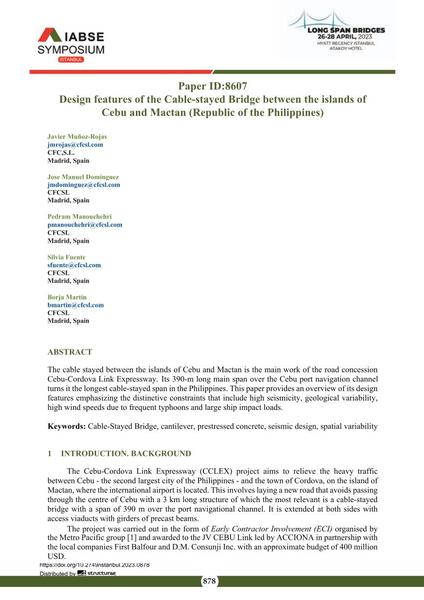Design features of the Cable-stayed Bridge between the islands of Cebu and Mactan (Republic of the Philippines)

|
|
|||||||||||
Bibliographic Details
| Author(s): |
Javier Munoz-Rojas
(CFCSL, Madrid, Spain)
Jose Manuel Domínguez (CFCSL, Madrid, Spain) Pedram Manouchehri (CFCSL, Madrid, Spain) Silvia Fuente (CFCSL, Madrid, Spain) Borja Martín (CFCSL, Madrid, Spain) |
||||
|---|---|---|---|---|---|
| Medium: | conference paper | ||||
| Language(s): | English | ||||
| Conference: | IABSE Symposium: Long Span Bridges, Istanbul, Turkey, 26-28 April 2023 | ||||
| Published in: | IABSE Symposium Istanbul 2023 | ||||
|
|||||
| Page(s): | 878-886 | ||||
| Total no. of pages: | 9 | ||||
| Year: | 2023 | ||||
| DOI: | 10.2749/istanbul.2023.0878 | ||||
| Abstract: |
The cable stayed between the islands of Cebu and Mactan is the main work of the road concession Cebu-Cordova Link Expressway. Its 390-m long main span over the Cebu port navigation channel turns it the longest cable-stayed span in the Philippines. This paper provides an overview of its design features emphasizing the distinctive constraints that include high seismicity, geological variability, high wind speeds due to frequent typhoons and large ship impact loads. |
||||
| Keywords: |
cantilever cable-stayed bridge seismic design prestressed concrete spatial variability
|
||||
